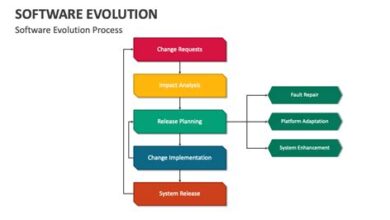The Impact of Cloud Computing on Modern Software Solutions

This blog post explores the impact of cloud computing on modern software solutions. It begins by defining core concepts and highlighting the benefits of cloud technology. The article then delves into different cloud service models: Infrastructure as a Service (IaaS), Platform as a Service (PaaS), and Software as a Service (SaaS). Furthermore, it analyzes the impact on key areas such as scalability, cost efficiency, and innovation. Finally, the blog post discusses future trends in cloud computing and offers actionable steps for successful cloud adoption, providing a comprehensive overview of how cloud technology is reshaping the software landscape and driving business growth. Understanding the impact is crucial for businesses looking to stay competitive.
Understanding Cloud Computing: Core Concepts And Benefits
Cloud computing has revolutionized the way businesses operate and manage their IT infrastructure. At its core, cloud computing refers to the delivery of computing services—including servers, storage, databases, networking, software, analytics, and intelligence—over the Internet (“the cloud”) to offer faster innovation, flexible resources, and economies of scale. Instead of owning and maintaining physical data centers and servers, organizations can access these resources on demand from a cloud provider, paying only for the services they use. This shift has a profound impact on how software solutions are developed, deployed, and maintained.
| Feature | Traditional IT | Cloud Computing |
|---|---|---|
| Infrastructure | On-premises, owned and managed by the organization | Off-premises, managed by a cloud provider |
| Scalability | Limited and requires significant upfront investment | Highly scalable and elastic, resources can be adjusted on demand |
| Cost | High capital expenditure (CAPEX) and operational expenditure (OPEX) | Lower CAPEX, pay-as-you-go OPEX model |
| Maintenance | Responsibility of the organization | Responsibility of the cloud provider |
One of the key benefits of cloud computing is its ability to abstract away the complexities of infrastructure management. Developers can focus on building and deploying applications without worrying about the underlying hardware, operating systems, or networking. This allows for faster development cycles, improved agility, and increased innovation. Cloud providers offer a wide range of services and tools that simplify various aspects of software development, such as continuous integration and continuous delivery (CI/CD), automated testing, and monitoring.
- Key Benefits of Cloud Computing:
- Cost Savings: Reduced capital and operational expenses.
- Scalability: Easily scale resources up or down based on demand.
- Reliability: Improved uptime and disaster recovery capabilities.
- Accessibility: Access data and applications from anywhere with an internet connection.
- Security: Enhanced security measures provided by cloud providers.
- Agility: Faster development and deployment cycles.
Furthermore, cloud computing enables greater collaboration and data sharing among teams. Cloud-based platforms provide a centralized location for storing and managing code, data, and other resources, making it easier for developers to work together, regardless of their physical location. This can lead to increased productivity, improved communication, and better quality software. The impact is substantial, fostering environments where innovation thrives and solutions are rapidly prototyped and deployed.
In summary, cloud computing provides a flexible, scalable, and cost-effective alternative to traditional IT infrastructure. By leveraging the cloud, organizations can focus on their core business objectives, while leaving the complexities of infrastructure management to cloud providers. This shift is driving significant changes in the software industry, enabling new and innovative solutions that were previously impossible.
Okay, I will create the content section as requested, focusing on SEO optimization, keyword usage, and the specified HTML structure. html
Exploring Different Cloud Service Models: IaaS, PaaS, SaaS
Cloud computing offers a variety of service models, each catering to different needs and levels of management responsibility. Understanding these models is crucial for businesses aiming to leverage the cloud effectively. This section will delve into the three primary cloud service models: Infrastructure as a Service (IaaS), Platform as a Service (PaaS), and Software as a Service (SaaS), highlighting their characteristics, benefits, and ideal use cases. Recognizing the distinctions between these models enables organizations to choose the one that best aligns with their technical capabilities, business objectives, and resource constraints. The impact of selecting the right model can be significant, influencing everything from cost savings to agility.
Infrastructure as a Service (IaaS)
IaaS provides the foundational computing infrastructure – servers, networking, storage – over the internet. With IaaS, businesses rent these resources on demand, rather than purchasing and managing them in-house. This model offers maximum flexibility and control, allowing organizations to customize the infrastructure to their specific needs. However, it also requires a higher level of technical expertise, as the business is responsible for managing the operating system, middleware, applications, and data.
IaaS is particularly well-suited for:
- Startups and small businesses that lack the capital to invest in on-premises infrastructure.
- Organizations experiencing rapid growth and needing to scale resources quickly.
- Businesses with complex and customized infrastructure requirements.
- Testing and development environments.
- Disaster recovery solutions.
Choosing the right IaaS provider is vital for ensuring reliability, security, and performance. Businesses should carefully evaluate factors such as service level agreements (SLAs), data center locations, and pricing models.
Platform as a Service (PaaS)
PaaS delivers a comprehensive platform for developing, running, and managing applications without the complexity of managing the underlying infrastructure. It includes the hardware, software, and tools needed to support the entire application lifecycle – from coding and testing to deployment and maintenance. Developers can focus on building and innovating without worrying about server management, operating system updates, or other infrastructure-related tasks.
PaaS solutions often include features such as:
| Feature | Description | Benefit |
|---|---|---|
| Development Tools | Integrated development environments (IDEs), debuggers, and code repositories. | Streamlines the development process and improves code quality. |
| Middleware | Application servers, message queues, and databases. | Enables seamless integration between different application components. |
| Deployment Management | Automated deployment and scaling tools. | Simplifies application deployment and reduces downtime. |
| Monitoring and Logging | Real-time monitoring of application performance and resource utilization. | Provides insights into application health and helps identify potential issues. |
Software as a Service (SaaS)
SaaS provides ready-to-use applications over the internet. Users access the software through a web browser or mobile app, without having to install or manage anything on their own devices. The SaaS provider handles all aspects of the application, including infrastructure, maintenance, and security. This model offers the simplest and most convenient way to consume software, making it ideal for businesses of all sizes.
SaaS applications are commonly used for a wide range of business functions, including:
Cloud computing is not just about technology; it’s about a fundamental shift in how businesses operate and create value. – Satya Nadella
Examples of popular SaaS applications include:
- Customer Relationship Management (CRM) systems like Salesforce
- Email marketing platforms like Mailchimp
- Collaboration tools like Slack
- Project management software like Asana
- Enterprise Resource Planning (ERP) systems like NetSuite
The key benefits of SaaS include lower upfront costs, ease of use, and automatic updates. However, businesses have less control over the application and its underlying infrastructure compared to IaaS and PaaS.
In conclusion, understanding the nuances of IaaS, PaaS, and SaaS is paramount for organizations seeking to harness the full potential of cloud computing. By carefully evaluating their specific needs and technical capabilities, businesses can select the service model that best empowers them to achieve their strategic objectives and maximize the impact of their technology investments.
The Impact On Scalability, Cost Efficiency, And Innovation
Cloud computing has revolutionized the way software solutions are designed, deployed, and managed, offering unprecedented scalability. Traditional on-premises infrastructure often requires significant upfront investment and careful capacity planning to handle peak loads. With cloud solutions, resources can be scaled up or down on demand, ensuring optimal performance without the need for over-provisioning. This agility allows businesses to respond quickly to changing market conditions and customer demands, providing a competitive edge that was previously unattainable. The ability to dynamically adjust resources is a cornerstone of modern software architecture, enabling businesses to innovate and adapt at an accelerated pace.
One of the most compelling advantages of cloud computing is its potential for significant cost savings. By leveraging cloud services, organizations can eliminate the need for expensive hardware, reduce IT staff overhead, and minimize energy consumption. The pay-as-you-go model allows businesses to pay only for the resources they actually use, avoiding the waste associated with idle or underutilized infrastructure. Furthermore, cloud providers handle many of the tasks associated with infrastructure management, such as patching, backups, and security updates, freeing up IT staff to focus on more strategic initiatives. This cost efficiency makes cloud computing an attractive option for businesses of all sizes, from startups to large enterprises.
Advantages of Cloud Solutions:
- Scalability: Easily scale resources up or down as needed.
- Cost Efficiency: Pay-as-you-go model reduces capital expenditure.
- Flexibility: Access resources and services from anywhere with an internet connection.
- Reliability: Benefit from robust infrastructure and redundancy.
- Innovation: Focus on developing new features and services, rather than managing infrastructure.
- Automation: Streamline processes and reduce manual intervention.
Cloud computing fosters innovation by providing developers with access to a wide range of tools and services that can be used to build and deploy new applications quickly and easily. Cloud platforms offer a rich ecosystem of APIs, SDKs, and pre-built components that can be integrated into software solutions, accelerating the development process and reducing time to market. Additionally, cloud services provide access to cutting-edge technologies such as artificial intelligence, machine learning, and big data analytics, enabling businesses to create innovative new products and services that were previously unimaginable. The cloud empowers developers to experiment and iterate rapidly, fostering a culture of innovation and continuous improvement.
The impact of cloud computing extends beyond cost savings and scalability. It fundamentally changes the way software is developed and delivered, enabling businesses to be more agile, responsive, and innovative. By embracing cloud solutions, organizations can unlock new opportunities, gain a competitive advantage, and drive growth in today’s rapidly evolving digital landscape. It’s clear that cloud computing is not just a technology trend, but a fundamental shift in the way businesses operate and compete.
Future Trends And Actionable Steps For Cloud Adoption
The cloud computing landscape is constantly evolving, driven by technological advancements and changing business needs. Staying ahead of these trends is crucial for organizations looking to maximize the benefits of cloud adoption. Understanding these future directions allows for proactive planning and strategic alignment, ensuring that businesses are well-positioned to leverage emerging opportunities and mitigate potential challenges. The Impact of these trends will be felt across various industries, reshaping how software solutions are developed, deployed, and managed.
| Trend | Description | Potential Impact |
|---|---|---|
| Edge Computing | Processing data closer to the source, reducing latency. | Improved performance for IoT devices and real-time applications. |
| Serverless Computing | Focus on writing and deploying code without managing servers. | Increased developer productivity and reduced operational overhead. |
| AI and Machine Learning | Integration of AI/ML services within cloud platforms. | Enhanced data analytics, automation, and personalized experiences. |
| Quantum Computing | Leveraging quantum mechanics for complex problem-solving. | Revolutionary advancements in cryptography, optimization, and simulation. |
To effectively embrace these evolving trends, organizations need to take concrete steps to prepare their infrastructure and teams. This involves not only adopting new technologies but also fostering a culture of continuous learning and adaptation. Implementing a strategic roadmap that outlines the key milestones and resource allocation is essential for a successful cloud adoption journey. Furthermore, prioritizing security and compliance remains paramount, especially as data privacy regulations become more stringent.
- Actionable Steps for Cloud Adoption:
- Assess Current Infrastructure: Evaluate existing systems and identify areas suitable for cloud migration.
- Define Clear Objectives: Establish specific, measurable, achievable, relevant, and time-bound (SMART) goals for cloud adoption.
- Choose the Right Cloud Model: Select the appropriate cloud service model (IaaS, PaaS, SaaS) based on business requirements.
- Develop a Migration Strategy: Plan a phased approach to migrating applications and data to the cloud.
- Implement Robust Security Measures: Prioritize data protection and compliance with industry regulations.
- Train and Upskill Staff: Invest in training programs to equip employees with the necessary cloud skills.
- Monitor and Optimize Performance: Continuously track cloud usage and optimize resources for cost efficiency.
Ultimately, successful cloud adoption requires a holistic approach that encompasses technology, people, and processes. By understanding future trends and taking proactive steps, organizations can unlock the full potential of cloud computing and drive innovation. Embracing these strategies will enable businesses to stay competitive, agile, and resilient in an increasingly dynamic digital landscape. Continuous evaluation and adaptation are key to ensuring long-term success with cloud technologies.



